Title : Monitoring the characteristics of A/H1N1 influenza viruses circulating in post-2009 pandemic flu seasons in Romania
Abstract:
Background: In April 2009, Centers for Disease Control and Prevention (United States) identified a swine-origin influenza virus (H1N1) in human infection cases from Mexico. The new virus was genetically different from the seasonal one and spread rapidly into the human population around the world.
The first A/H1N1pdm09 flu cases were detected in Romania in June 2009. The post-2009 pandemic influenza seasons were characterized by the co-circulation of A(H1N1)pdm09 with either A/H3N2 or influenza B virus, except for the season of 2011–2012 when A/H3N2 prevailed and for the season of 2020-2021 when influenza monitoring was biased by the COVID-19 sanitary crisis.
Objective: The aim of this study was to provide a comprehensive picture of the antigenic and genetic characteristics of A/H1N1 viruses circulating in thirteen post-2009 pandemic flu seasons in Romania.
Methods and Materials. Nasopharyngeal exudates, tracheobronchial aspirates, and necrotic samples (lung fragments) were systematically collected according to national influenza surveillance methodology and to the European Centre for Disease Prevention and Control case definitions for influenza-like illness and severe acute respiratory infections. In house and commercial real-time RT-PCR assays were used for the detection of influenza A hemagglutinin and matrix genes. Antigenic characterization was performed on Madin-Darby canine kidney (MDCK and MDCK-SIAT1) cellular substrates and evaluated the recognition efficacy of the circulating influenza viruses by the current influenza vaccine-induced antibodies (specific ferret antisera) on guinea pig erythrocytes or turkey red blood cells, using hemagglutination inhibition test. Sanger and next-generation sequencing data (MiSeq Illumina and Oxford Nanopore) were obtained and used for molecular analysis with MEGA–X, MAFFT, IQ-TREE 2, and ITOL.
Results. The majority of influenza A/H1N1pdm09 viruses identified during the 2010-2017 seasons were antigenically similar to the A/California/7/2009 vaccine strain. For two consecutive seasons (2017-2019) the viruses in circulation were A/Michigan/45/2015-like. A/Brisbane/02/2018-like and A/Michigan/45/2015-like were detected during 2019-2020 season. The 2021-2022 season was marked by a low-level circulation of A/Victoria/2570/2019-like (only one strain identified). In 2022-2023, A/Sydney/5/2021-like isolates were detected. The 2023-2024 season was characterized by the circulation of AH1/Sydney/5/2021-like and A/Victoria/4897/2022-like. At the beginning of the 2024-2025 season A/Victoria/4897/2022-like isolates were detected. Phylogenetic analysis revealed the resemblance of influenza A/H1N1 strains circulating in Romania with A/California/09 (2010-2011), A/St Petersburg/27/2011 group 6 (2012-2013), representative A/South Africa/3626/2013 subgroup 6B (2013-2016), representative A/Michigan/45/2015 subgroup 6B.1 (2016-2019), representative A/Norway/3433/2018 subgroup 6B.1A.5a (2019-2020), representative A/Norway/25089/2022 subgroup 6B.1A.5a and A/Sydney/5/2021 subgroup 6B.1A.5a.2a (5a.2a) (2022-2023),, representative A/Sydney/5/2021 subgroup 6B.1A.5a.2a (5a.2a) (2023-2025).The sequences were made available in GISAID - Global Initiative on Sharing All Influenza Data.
Conclusions. Influenza viruses constantly evolve through antigenic changes. The A/H1pdm09 replaced seasonal A(H1N1) viruses and continues to circulate worldwide as a seasonal influenza virus together with subtype A(H3N2) and type B viruses. Continuous monitoring of influenza virus antigenic and genetic characteristics is important for establishing the vaccine composition which is yearly reviewed and to tackle future outbreaks.
Funding Acknowledgement Statement: This study was supported by the Romanian Ministry of National Defence, Ministry of Health, and Ministry of Research, Innovation and Digitalisation (PN 23 44 03 01) and by the “Vaccine Effectiveness, Burden and Impact Studies (VEBIS)” - project of the European Centre for Disease Prevention and Control (ECDC).
We are acknowledging: collaboration with Worldwide Influenza Centre, WHOCC for Reference and Research on Influenza, the Francis Crick Institute for influenza reference strains and specific ferret antisera offered.



